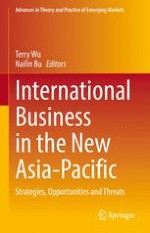The Asia-Pacific region, sustaining more than four decades of rapid growth, has emerged as an economic force comparable in significance to Europe and North America. This book examines the economic, geopolitical, technological, demographic, and cultural forces that shape the international business strategies in the Asia-Pacific region. Specifically, it examines the seismic shifts in global business environment since the new century, and addresses emerging opportunities and threats in the Asia-Pacific region.
This book offers new insights for international business in areas such as trade policy, supply chains, international investment, technological innovation, international marketing, digital economy, and human resources. The enclosed comprehensive and diverse analyses of the international business landscape in the New Asia are invaluable to scholars, managers, politicians, and policy makers alike.
This book is engaging and informative. It presents a collection of diverse and cutting-edge topics that offer new insights into International Business activities in the Asia-Pacific region, raising questions for debate and opening pathways for future research. A must-read book for International Business scholars.— Hussain G. Rammal, University of Technology Sydney, Australia
This book offers a comprehensive introduction to the general business environment in Asia. It highlights the complexities and dynamics of doing business in Asia and provides insightful understandings of emerging issues in the region. The chapter-by-chapter analyses of the region depict the rich thematic contexts in which key issues and challenges facing corporate executives as well scholars in international business. I believe that this book is valuable for students of international business, global business environment and regional studies. —Hongxin Zhao, Saint Louis University, USA
